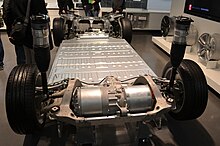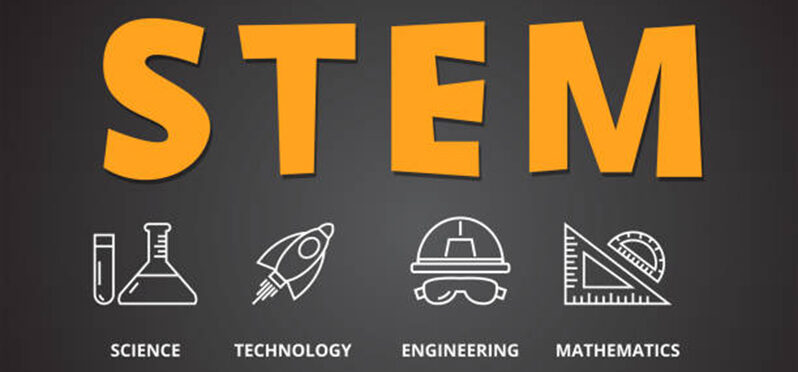It’s one of the fastest EV, it’s on the best, it the car of the century, the Tesla Model S
The Tesla Model S was officially announced on June 30th, 2008. A prototype of the vehicle was displayed on March 26th, 2009. In May 2010, Tesla announced it would produce the Model S at the former NUMMI plant in Fremont, California. The Model S officially launched on June 22, 2012.

The Evolution of Tesla Model S from 2014 to 2021
On October 9, 2014, Tesla introduced all-wheel drive (AWD) versions of the Model S 60, 85, and P85 models, designated by a D at the end of the model number (the P represents performance).[41][42][43] Deliveries of the P85D started in December 2014, with the 85D models following in February 2015, and the 70D models in April 2015.[42]
In September 2014, the Model S began to be equipped with cameras, forward looking radar[44][45] and ultrasonic acoustic location sensors that provided a 360-degree view, to be used with Tesla Autopilot. Autopilot later arrived in October 2015, as part of a software update.[46]
In June 2015, Tesla stated that the Model S had traveled over 1 billion miles (1.6 billion km), the first all-electric car to reach that total.[47][48] Globally, Model S sales passed 100,000 units that year,[49] and 150,000 in November 2016.[50] The 200,000 milestone was achieved by early in the fourth quarter of 2017.[14]
Throughout 2015, Tesla would make various changes to the Model S, including an enhanced powertrain that would last for one million miles.[51] An update that year introduced electromechanical brakes.[52] That same year, Tesla introduced a 70 kWh battery to replace the existing 60 kWh batteries and base 60 kWh Model S vehicles.[53][54] Tesla also introduced a 90 kWh battery as a “range upgrade” and explained that the 6% energy increase was due to “improved cell chemistry”[51] and the introduction of silicon into the cell’s graphite anode.[55] After being discontinued the year prior, the 60 and 60D returned in 2016 with a software-limited, upgradeable 75 kWH battery and a new air filter, dubbed “Bioweapon Defense Mode”.[56]
In April 2016, Tesla removed the black nose cone and added a body colored fascia.[57] The front fascia has a similar design as the Model X, adding adaptive LED headlights. A HEPA cabin air filtration system was added. The standard charger increased from 40 to 48 amps, speeding charging at higher power outlets. Two ash wood interior options were added.[58] In August of that year, Tesla announced the P100D with a “Ludicrous” mode option, a 100 kWh battery with 315 miles (507 km) of range,[59] weighing 625 kg in a 0.40 m3 volume, a density of 160 Wh/kg.[60]
In 2017 Tesla introduced “ludicrous mode plus”, which includes “launch mode”, claiming that with both modes the car can accelerate 0 to 60 mph (0 to 97 km/h) in 2.3 seconds.[61]
In April 2017, Tesla discontinued the 60 kWh software-limited battery option. The lowest-capacity option subsequently became the 75 kWh battery. Additionally, Tesla significantly reduced the software upgrade options for the facelifted 60 and 70 models to be upgraded over-the-air to 75 (and rebadged at their next visit to a Tesla service center). In August 2017, Tesla announced that HW2.5 included a secondary processor node to provide more computing power and additional wiring redundancy to improve reliability; it also enabled dashcam and sentry mode capabilities.[62][63]
In March 2018, the Media Control Unit (MCU) was updated,[64] improving the performance of the center screen and adding games to the MCU such as Cuphead and streaming services such as Netflix to the MCU.[65] In May of that year, in collaboration with the Software Freedom Conservancy, Tesla released some of the internal source code of Model S on a GitHub repository as part of their software license compliance process.[66][67]
In May 2019, as part of an engineering refresh, the range of the Model S was increased to 370 mi (600 km) and smart air suspension was added.[68] The range would be increased further in February 2020 to 390 mi (630 km) of range.[69] In August 2020, the EPA updated the results of their range test of the Model S to 402 miles (647 km).[70]
On October 15, 2020, the U.S. price of the long-range version was lowered to $69,420, a reduction of $2,570 from two days prior.[71][72][73]

In early 2021, with the introduction of an entirely new interior, now with landscape orientation of the MCU, more rear seat room, and a lightly modified exterior, Tesla changed the “Performance” and “Long Range” Model S branding in favor of “Plaid” and “Long Range,” respectively. On June 10, 2021, the Model S Plaid was released at a delivery event at the factory with nearly 30 new owners taking delivery that evening; the Plaid version notably featured a return of the third-row seating, allowing a total of seven passengers,[citation needed] although third-row seating is not present within the consumer version of the car.[citation needed] The Long Range version was EPA-rated to a new high of 405 mi (652 km) when equipped with the standard 19″ wheels, making it the longest range EV in the world at the time; the Plaid was listed at 396 mi (637 km) of range.[74]
Design
The Model S is classified as a full-size luxury sedan in the United States, although the EPA refers to the Model S as a “Large Car”[75] (greater than or equal to 120 cu ft or 3.4 m3) or “Luxury Sedan”.[76] The Euro Car Segment classifies the Model S as a S-segment (sports car);[77][78] in Germany, the Model S is classified as “Oberklasse” (F-segment).[79]
Powertrain

The rear axle has a traditional open differential. Models with Dual Drive dual motors also have an open differential on the front axles. The front and rear axles have no mechanical linkage—with dual motors, the power distribution among them is controlled electronically. With the introduction of the tri-motor Plaid version in mid-2021, new performance levels were achieved, making the Model S Plaid the fastest accelerating production car in the world[81] until the debut of Rimac’s Nevera in mid-2022.[82]
Battery

The battery pack includes thousands of identical cylindrical 18650 battery cells 18 mm in diameter and 65 mm in height. These cells use a graphite/silicon[55] anode and a nickel-cobalt-aluminum cathode with an aqueous electrolyte and lithium ions as charge carriers.[83] The battery capacity within the Model S has changed numerous times since its debut, ranging from 60–100 kWh. The batteries are the heaviest component within the Model S; the 85 kWh battery pack weighed 1,200 lb (540 kg).[84][better source needed]
Cell, group, module, pack

The P85 pack contains 7,104 lithium-ion battery cells in 16 modules wired in series (14 in the flat section and two stacked on the front).[86] Each module contains 6 groups of 74 cells[87] wired in parallel; the 6 groups are then wired in series within the module.[87][88][89][90]

- Stem Guyana
- Jeremiah khan
- Contact me on (664 2054 WhatsApp) or (jeremiahkhan11@gmail.com)
